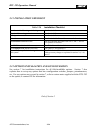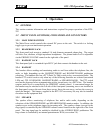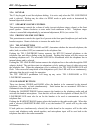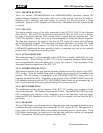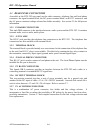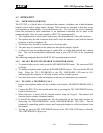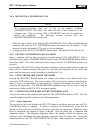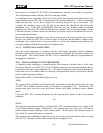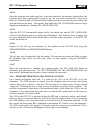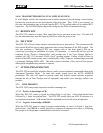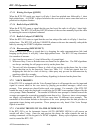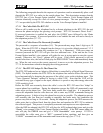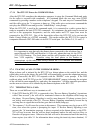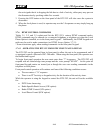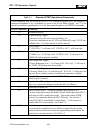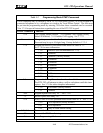
RTU-292 Operations Manual
3.4.8.3
Once the telephone and radio party have both been contacted, the operator should advise the
telephone party that a phone patch is being set up. He may want to advise that a short noise
burst (not extremely loud) will be heard in the telephone receiver, and that the conversation can
proceed following the burst. The operator then pushes the TEL LINE/RADIO button to begin
adaptation, indicated by a flashing TEL LINE/RADIO LED.
3.4.8.4
After the RTU-292 automatically adapts itself to the phone line, and the TEL LINE/RADIO
LED will stop flashing and stay continuously illuminated. This indicates that a complete link
has been established between the distant radio set and the distant telephone, via the RTU-292
and the local radio set.
3.4.8.5
Progress of the call may be monitored via the speaker on the RTU-292 front using the
SPEAKER/PHONE and SPEAKER/RADIO buttons.
3.4.8.6
The call may also be monitored with the handset. The operator may speak and listen to either
the telephone party alone, the radio party alone, or both together, using the HANDSET
pushbuttons.
3.4.8.7
When the conversation is complete, the operator pushes the TEL LINE OFF button to
disconnect from the phone line. The TEL LINE/RADIO and TEL LINE/PHONE LEDs will
both turn off, indicating that the phone is back on-hook (disconnected).
3.4.9 TRANSMITTER KEYING, HALF DUPLEX SYSTEM
For a normal half-duplex radio link, it is usual for the VOX in the RTU-292 to key the
transmitter. The VOX responds to signals from the telephone line and operates the keying
circuits when voice is present. Once the VOX has tripped, it remains active for the selected
“hang time” following the loss of audio to prevent dropout on pauses between syllables. The
unit also incorporates a short delay of the transmitted audio, which allows the VOX to key the
transmitter a short time before the audio arrives, so that the RF output can be at full power to
avoid missing part of the first syllable.
The VOX in the RTU-292 is generated within the DSP and is extremely sensitive and reliable.
However, there are occasions when the audio level from the telephone line is too low to operate
the VOX reliably, or for some other reason it is desired to key the transmitter manually. To do
this, operate the front panel KEY pushbutton or the handset PTT button to key the transmitter.
The VOX switch can be left engaged, if desired, so that the operator can override the VOX at
any time, or the VOX may be disengaged, so all keying occurs manually.
JPS Communications, Inc.
3-8



